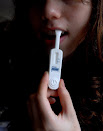From the summary:
COVID-19 has had a disproportionate impact on Black people across urban, suburban, and rural communities. As of September 2020, Black people were nearly 3.5 times as likely to die from COVID-19 as white people when age is accounted for.
Latinx people have experienced some of the highest rates of infection from COVID-19 in the country. As of June 2020, counties where more than a quarter of the population is Latino saw infection rates increasing at higher rates than in counties with smaller Latino populations, and as of July 2020, the infection rate among Hispanic patients was more than three times the rate among white patients. Over the same time period, Hispanic patients were hospitalized at a rate that was more than four times higher than white patients, and COVID-19 accounted for approximately one in five deaths among Hispanic people.
Data are not consistently available from states for other minority groups, but what is known supports similar conclusions about the risk of serious COVID-related complications and death among Asians, Native Americans, and LGBTQIA+ individuals.
Contributing factors include underlying health conditions, a lack of adequate insurance, increased likelihood of exposure to COVID-19 at work, mistrust of the health care system based upon a history of racial bias and exploitation, present-day explicit and implicit bias in the health care system, underrepresentation of physicians of color, bias in medical research and pharmaceutical clinical trials, limited access of patients of color to high-quality medical care, and a long list of social determinants of health that have disproportionately disadvantaged persons of color.
This is an important report, and not only for the fifteen pages of endnotes. The report ends with thirty recommendations for congressional action. Ask your representative or senator if they've read the report. We all should.




















